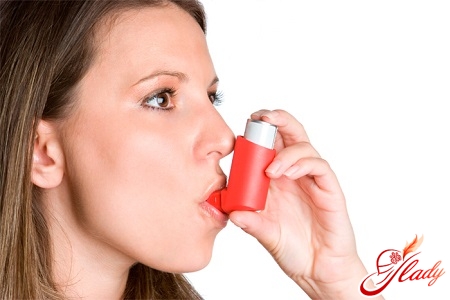
Acute bronchitis is an inflammation of the bronchi,which occurs primarily due to infection or virus entering the body. Less often, the cause may be allergic or chemical factors, even a fungal infection. If you get too cold, wet your feet, the likelihood of getting sick increases significantly. That is why people get sick more often in the fall and spring. People who suffer from chronic infections of the nasopharynx, such as sinusitis, rhinitis, sinusitis, are predisposed to acute bronchitis. Very often, bronchitis occurs with the flu, acute respiratory infections, whooping cough, measles. The occurrence of this disease is facilitated by alcohol consumption and smoking. Also, the development of acute bronchitis can be caused by irritating effects of essential oils, toxic gases, dust.
Symptoms of the disease
Acute bronchitis does not develop immediately. Early signs appear first, which develop into a more complex form if treatment is not started in time.
Cough is a protective function of the body,It promotes self-cleaning of the bronchi from mucus and phlegm. During illness, phlegm accumulates in the bronchi, which irritates the mucous membranes of the trachea, larynx and bronchi. At the moment of irritation of the mucous membrane, phlegm causes a strong inhalation, and then a convulsive exhalation. At the beginning of such an exhalation, the glottis is closed, therefore, the air pressure in the bronchi increases sharply and at the moment of exhalation, this gap opens with force. The clinical picture of acute bronchitis has three phases:
The first phase is the height of the disease.During this period, clinical signs increase: dry cough, runny nose, fever, headache and weakness. The second phase is intoxication of the body, when the body begins to be poisoned by the waste products of the pathogen (bacteria, virus), as well as toxins produced by the patient's body. During this period, expectoration of sputum begins. The third phase is resolution of the disease. During this phase, the function of the respiratory tract is restored. The disease can be mild, moderate and severe. It all depends on the level of the body's resistance and the activity of the pathogen (microorganisms). The diagnosis of "acute bronchitis" is made based on the general symptoms described above. But only if there are no changes in the lungs detected by radiography. Therefore, an X-ray of the lungs prescribed by a doctor in such a case allows you to exclude other serious diseases. For example, pneumonia, tuberculosis, etc. By the end of the first week of illness, the symptoms begin to gradually disappear. But the cough persists longer, up to 10-14 days. The airways and bronchial mucosa are finally cleared after 2-3 weeks.
Medical treatment of acute bronchitis
Treatment of acute bronchitis is complex and aimed at:
- fight against the virus, infection;
- restoration of patency in the bronchi;
- elimination of negative factors (household and production);
- a complete course of treatment to prevent the transition of the disease to a chronic form.
Treatment with medications is prescribed to the patient,Depending on the symptoms of the disease. This is done only by the attending physician. Antipyretic, anti-inflammatory and analgesic drugs are prescribed. If the nasopharynx and larynx are affected at the same time, aerosol preparations are very useful, for example: cameton, ingalipt, camphomen; spray 3-4 times a day. They contain streptocide, menthol, norsulfazole, camphor oil, etc. Aerosol preparations have anti-inflammatory, antiseptic and local anesthetic effects. It is necessary to take vitamins A, B, C 3 times a day. If symptomatic therapy is ineffective, purulent sputum appears, then antibacterial drugs are prescribed. These are tetracycline, biseptol, semi-synthetic penicillins, etc. They affect the bacterial microflora. Sulfonamides are also used to suppress the vital activity of microbes. Or they are prescribed in combination with vitamins A, B and C (1 mg per 100 thousand units of antibacterial drug). Taking antibiotics in this case is the prevention of pneumonia. Antibiotics do not completely eliminate bronchospasms and do not restore patency in the bronchi. For this reason, if necessary, drugs that expand the bronchi are prescribed. This can be ephedrine, euphyllin, isadrine, etc. If the inflammatory process is protracted and does not respond to antibacterial therapy, it is recommended to combine it with the introduction of aerosol prodigiosan (using an ultrasonic inhaler). Prescribe 4 inhalations, 2 times a week, 1 mg of the drug is used per 1 inhalation. Warm alkaline inhalations with sea salt or mineral water are used for medical rehabilitation, for example, "Essentuki". or "Borjomi". For general strengthening of the body and its hardening, ultraviolet irradiation, ion therapy and electrophoresis on the chest are recommended. A special method of therapeutic physical training is used, it includes breathing and sound gymnastics, special training. Staying in a sanatorium or suburban rehabilitation departments greatly contributes to the recovery of patients.
Treatment of bronchitis with folk methods
Treatment of acute bronchitis in children
Dear parents, please note thatAcute bronchitis in some cases can cause complications and develop into pneumonia or bronchiolitis. There are certain signs that indicate an unfavorable course of the disease, when you should contact your doctor:
- Stably high temperature, above 38 degrees.
- The general severe condition of the child, lasting more than 3-4 days.
- Shortness of breath in a baby: from 60 breaths per minute in infants to 2 months, from 50 breaths per minute in babies from 3 months to a year and from 40 breaths per minute in children from 1 year to 3 years.
- At an inhalation the skin on intercostal gaps is considerably drawn
In these cases, the child should be hospitalized immediately.









